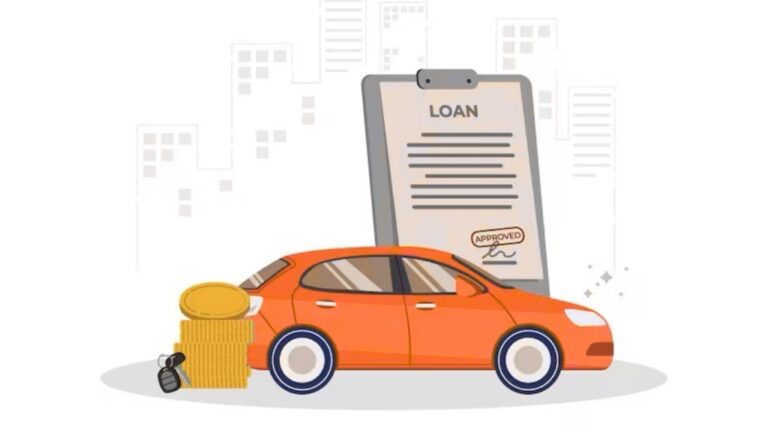In a financially dynamic world, personal loans offer a swift and uncomplicated solution for those seeking funds. This post emphasizes the importance of understanding loan tenure and exploring its impact on monthly payments, interest costs, and overall financial health. Discover the optimal loan term, aligning with your financial well-being.
What is the Personal Loan Maximum Tenure?
The term ‘maximum loan tenure’ refers to the longest period over which you can spread out your loan repayments. Typically, in India, personal loan maximum tenure can extend up to 5 years, though this can vary depending on the lending institution and borrower’s creditworthiness. Longer tenures afford you the luxury of lower monthly payments, thereby reducing the immediate financial burden.
Example for Maximum Tenure: Let’s consider an example. Imagine Rohit taking out a personal loan of INR 5 lakhs at an interest rate of 10% per annum. If he opts for the maximum tenure of 5 years, his monthly payments – or Equated Monthly Instalments (EMIs) – would be substantially lower than if he were to pay off the same loan in half the time.
What is Personal Loan Minimum Tenure?
Conversely, the ‘minimum loan tenure’ is the shortest time frame you can choose to repay your loan. In India, this can range anywhere from 3 months to a year. Short loan tenure can be beneficial for those who want to settle their debts quickly and are comfortable with a larger EMI.
Example for Minimum Tenure: For instance, if Priya borrows an amount of INR 1 lakh with an interest rate of 12% per annum and selects a minimum tenure of 6 months, her EMI will be higher than spreading it over 12 months, but the total interest paid by the end of the loan period will be less.
Difference between Personal Loan Maximum Tenure and Minimum Tenure
The main difference between maximum and minimum personal loan terms is the time you take to pay back the loan. Maximum terms let you spread payments over a longer period (1 to 5 years), resulting in lower monthly payments, but more interest paid overall. Minimum terms mean you repay the loan in a shorter time (3 months to a year), leading to higher monthly payments, but less overall interest paid as you clear the principal faster. It’s a trade-off between lower monthly costs and higher overall interest for longer terms, or higher monthly costs but less total interest for shorter terms.
Personal Loan Maximum Tenure vs. Personal Loan Minimum Tenure:
Let’s break down the nuances between the longest and shortest tenures available for personal loans:
| Aspect | Maximum Tenure | Minimum Tenure |
| Tenure Duration: | Long-term, typically between 1 and 5 years | Short-term, may range from just 3 months up to 12 months |
| Monthly EMI: | Much lower EMI, easing the immediate financial burden | Higher EMI, resulting in a larger portion of the monthly budget going towards repayment |
| Interest Accrued Over Tenure: | Higher due to the loan being spread out over more time | Lower, as the principal is paid off faster |
| Overall Interest Paid: | Considerably more due to the extended period of accruing interest | Less overall interest due to the shorter repayment period |
| Financial Burden: | Less intense on a month-by-month basis, allowing for flexibility with other expenses | Greater monthly financial commitment, requiring more strict budgeting |
| Total Repayment Amount: | Greater than the minimum tenure option due to the extra interest accumulated | Smaller due to reduced interest accumulation |
| Suitability: | Ideal for those in need of lower monthly outgoings due to restricted income | Better for those capable of handling higher monthly payments to clear their debt faster |
| Impact on Financial Planning: | Longer-term financial planning required; ideal for those preferring gradual debt clearance | Requires immediate financial strength but frees from debt quicker for other investments or savings |
| Early Repayment Penalties: | More common, as lenders expect a certain amount of interest to be earned | Less likely, given the short timeframe, although this can differ between lenders |
Factors to Consider While Choosing a Personal Loan Tenure
Choosing the right tenure for your personal loan is as vital as selecting the loan itself. The right tenure aligns with your monthly cash flow and financial plans, ensuring you can repay comfortably without upsetting your financial stability. Let’s dive into the critical factors that demand your consideration:
- Income Stability and Monthly Cash Flow: Your regular earnings are the linchpin in deciding how much you can afford to repay each month. A stable, high income may accommodate a shorter tenure with higher EMIs.
- Interest Rate Offered: Banks often offer different interest rates for varying tenures. Shorter tenures may come with higher rates due to the accelerated repayment schedule.
- Cost of Loan: The longer your tenure, the more interest you will pay. Take a long-term view of the loan and work out the total cost of borrowing over different tenures.
- Future Income Prospects: Consider potential changes in your financial situation. Promotions or job changes can affect your repayment capacity, allowing you to choose a shorter tenure confidently.
- Emergency Funds: Ensure that your choice of loan tenure doesn’t deplete your ability to maintain or build an emergency fund that can cover 3–6 months of living expenses.
- Age and Retirement Plans: If you’re closer to retirement, a shorter tenure may avoid repayment extending into your non-earning years.
- Prepayment Flexibility and Penalties: If you’re likely to prepay your loan, check for prepayment penalties and choose a tenure with affordable pre-payment terms.
- Existing Financial Liabilities: Tally up your current debts—credit cards, other loans, etc. Your loan tenure should be such that your overall EMIs do not choke your monthly finances.
How to Choose the Right Loan Tenure?
Finding the ideal personal loan tenure is akin to tailoring a bespoke suit—it needs to fit your financial profile perfectly. Here’s how you can ensure a comfortable fit:
- Evaluate Your Monthly Budget: Start with a realistic appraisal of your monthly budget to understand how much you can spare for loan repayments.
- Estimate the Total Interest Payout: Use EMI calculators available online to project your total interest payout over various tenures to find the sweet spot between affordable EMIs and reasonable interest payout.
- Align With Your Financial Goals: If clearing debt is your priority, targeting a shorter tenure can help you become debt-free quickly. For long-term savers, a longer tenure may help balance investments and loan repayments.
- Cushioning for Financial Emergencies: Opt for a tenure that allows financial breathing room for unexpected expenses. It shouldn’t leave you stretched thin in case of an emergency.
- Consider Future Savings: A longer tenure that lowers your monthly outlay could allow more room for contributions to savings or retirement funds.
- Consult with Financial Planners: If in doubt, speak with financial experts. Their insights can guide you towards a tenure that complements your financial landscape.
How does Loan Tenure affect interest Rates?
The interplay between loan tenure and interest rates can significantly impact the total amount you pay back to the lender. Here’s how this relationship unfolds:
- Length of Tenure and Total Interest: Opting for a longer tenure can mean paying more in interest over the life of the loan. The prolonged period of borrowing increases the lender’s risk and, as a result, could hike up the interest rate.
- Short-Term Tenure Attraction: Lenders may offer more attractive interest rates for short tenures, as it assures a quicker return on their investment and reduces the risk associated with long-term lending.
- The Lender’s Pricing Strategy: Interest rates are also a reflection of how lenders price their loan products. Banks may periodically adjust rates based on their target customers and risk appetite.
- Debt-to-Income Ratio: Tenure affects your monthly repayment amount, which in turn impacts your debt-to-income ratio. A healthier ratio (lower debt compared to income) could make you eligible for lower interest rates.
- Credit Score: Borrowers with high credit scores may have the leverage to negotiate better interest rates, regardless of loan tenure.
Through careful consideration of these dynamics, you can choose a tenure that ensures an optimal balance between monthly affordability and total interest cost. Navigating the waters of personal loan tenure is a critical aspect of financial planning. Whether you favour a marathon or a sprint, the outcome directly impacts your pocket. Choose wisely, and you’ll have the financial tide flowing in your favour.
By thoroughly evaluating each of these elements, borrowers can calibrate their loan tenure to suit their financial realities – ensuring a healthy balance between their current obligations and future aspirations. It’s not just about finding a loan, but about crafting a repayment narrative that affirms your financial prowess and agility. With this guide in hand, confidently stride towards a loan tenure that positions you for success, mindful of the ripples it sends across your financial pond.
FAQs
Can I change the loan tenure after availing of the personal loan?
Some lenders may provide the flexibility to change your loan tenure post-disbursement, subject to their terms and conditions. However, it’s essential to be aware of any fees or additional charges that may apply when you alter your loan tenure.
How does the loan tenure affect my credit score?
Consistent and timely repayments of your loan over whichever tenure you choose can positively impact your credit score. Conversely, missed or late payments can hurt your credit score regardless of the loan tenure.
What is the maximum loan tenure for personal loans in India?
The maximum tenure for personal loans in India can range up to 5 years, though it can vary by lender and is also influenced by the borrower’s credit profile and the loan amount.
Conclusion:
Choosing the correct loan tenure has the potential to save you a significant amount of money and reduce financial stress. Deliberate planning, coupled with a clear understanding of the terms and your own finances, will enable you to navigate the personal loan process with confidence and ease. Remember, when it comes to loans, one size does not fit all; customization based on individual circumstances is key to making the most of your borrowing experience.
In conclusion, personal loan tenures should not be chosen in haste. Taking the time to assess your financial position, understand the implications of different tenures, and align them with your personal and financial goals is imperative. Remember, the ideal tenure is one that doesn’t strain your monthly finances, allows for savings and investments, minimizes the interest over the life of the loan, and meshes with your long-term financial planning.
Also, read:



